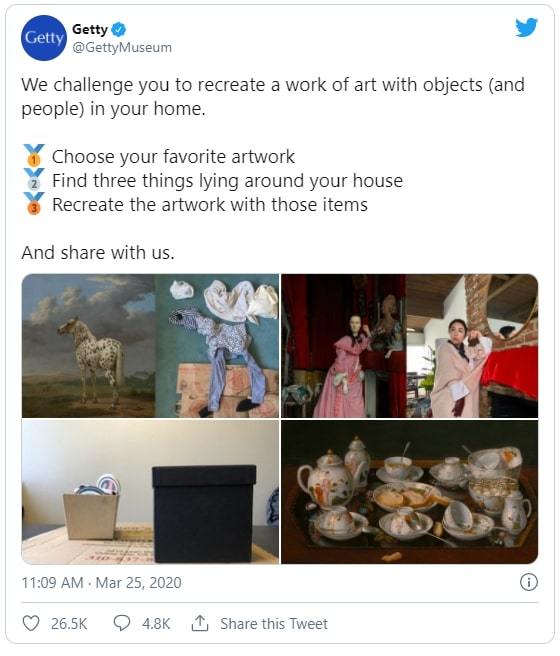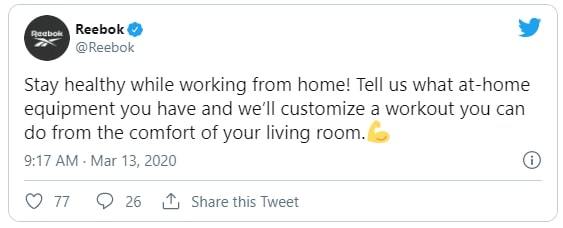Negative Impact Of Social Media On Business
During COVID-19, the world discovered that social media is a great way for individuals and communities to stay connected even while physically separated.
During the 1918 flu pandemic, which the CDC estimates infected a third of the world's population, people didn't have the same sources of communication we now have in the 21st century to quickly share news and information. For context, a public health report on Minneapolis's response to the 1918 flu shows that critical information regarding the virus was primarily shared via postal workers, Boy Scouts, and teachers. Can you imagine learning about a pandemic from a Boy Scout knocking on your door, encouraging you to wash your hands?
With the advent of social media in the 21st century, not only are we learning the latest news updates, but we're also using platforms like Facebook and Twitter to provide personal and business updates. For businesses, this means leveraging social media to support employees and customers like never before. For the government, it means doing its best to efficiently share factual and up-to-date information.

Taking a look at how individuals, businesses, and government agencies used social media to share information and interact with others throughout the COVID-19 pandemic, here are four primary roles of social media during a pandemic:
1. A source of information (and misinformation)
COVID-19 marked the first global pandemic in the age of social media. Governments and brands used social media to provide people with a better understanding of events and their impacts.Unfortunately, some people used social media to spread falsehoods, including miracle preventative measures, false claims about the implementation of martial law, conspiracy theories, and more.
Finding trusted sources of information regarding COVID-19 was challenging.
At the beginning of the COVID-19 pandemic, people were grappling for as much information as possible and the public became more susceptible to false and sometimes hazardous claims, which were then passed on to others. According to a PEW Research Center report that came out near the beginning of America's lockdown, about half of Americans said they've seen made-up news about COVID-19.
Distinguishing between trustworthy and untrustworthy sources on social media became more important than ever
During a pandemic, the best rule of thumb for making sure information on social media is accurate is to check original sources and make sure that (a) those sources are indeed trustworthy, and (b) the information was relayed accurately. Just because someone claims to have learned something from a reliable source doesn't mean they're relaying that information accurately.
If you're the one presenting information on social media, whether on behalf of a business or your personal account, it's your responsibility to cite and fact-check your own sources. Be wary of using verbiage that is alarmist or absolute to prevent spreading misinformation and creating a panic on social media during a pandemic.
2. An influence on public response to the outbreak
Billions of people are free to publicly share their opinions regarding a pandemic through various social media platforms. During the COVID-19 pandemic, we saw individuals, organizations, and businesses use social media to spread awareness of the virus, as well as the public actions that can be taken.
Here are a few of the most distinct ways social media influenced the public throughout the COVID-19 pandemic:
Social distancing and home quarantine became trends
Until COVID-19, many of us hadn't even heard of "social distancing," which refers to staying at least 6 feet away from others to help prevent the spread of infection. Soon after the world went into lockdown, social media users, from friends and family to celebrities and governments called for social distancing and encouraged people to stay strong during their home quarantines. One of the benefits of social media during a pandemic is that it enables this type of helpful and supportive information to easily be shared to a wide audience.
Many brands and organizations also came up with fun ways to engage with people on social media, such as the Getty Museum asking people to recreate works of art using items found in their homes.

Quarantine culture became trendy, as society went from dealing with the lockdown to embracing it. The impact of social media on culture was never more profound than it was during the COVID-19 pandemic. It helped people stay in touch and changed the ways brands interacted with consumers.
People boasted and shamed panic buying
At the start of the lockdown, many people excessively purchased household goods, sanitization products, and food in fear that necessities would no longer be accessible — just like they do when there is a hurricane or some other natural disaster. This over-purchasing became so commonplace that social media users coined a phrase to describe it: panic buying.
On social media, we saw panic buying discussed in two distinct ways: 1) people posting about their own panic buying, showing images of carts filled with toilet paper, water bottles, and frozen meals; and 2) people posting pictures of empty shelves or other people's carts as a way to shame supposed panic buyers.
3. A marketing platform
The COVID-19 outbreak presented a defining moment for many brands in how they chose to market their product.
Some people took advantage of the fear during the pandemic by selling snake oil-type products (think essential oils claiming to provide immunity). We also saw businesses pay extra attention to emerging trends, such as the increased search volume for things like face masks and hand sanitizer.
In fact, many brands responded to this increased demand by pivoting from their normal products in order to produce these highly demanded goods. Alcohol companies like Anheuser-Busch shifted from brewing beer to making hand sanitizer, Tesla began producing ventilators, and Brooks Brothers went from stitching suits to face masks.

Brands focused on socially responsible product marketing
Despite the uptick in alarmist-focused media spend, many businesses provided powerful and empathetic responses to COVID-19. Brands recognized their main responsibility to provide for the safety and well being of their employees and customers.
That said, we also saw brands creatively market their products while emphasizing public health, such as Dial spreading awareness about the proper handwashing technique and Reebok offering to create customized home workouts for consumers.


Additional examples of pandemic-related marketing include stores and restaurants emphasizing curbside pick-up and delivery services, streaming services offering extended trials for those who need entertainment, and the countless "video-conference" advertisements which were relatable for people working at home.
Many of the trends we saw on social media during the pandemic aren't going away anytime soon. The impact of the pandemic has forever changed many of the ways brands will interact with consumers moving forward.
4. A powerful way to bring positivity to a scary time
No platform is perfect. But while we saw misinformation and fear on social media, there was also an abundance of lifesaving information, connection with others, and global unity. Social media gave us the ability to share experiences with family and friends to help combat both literal and emotional isolation while also reminding us that we're all in this together.
Here are a few of the ways that social media made positive impacts during the COVID-19 pandemic:
Fundraisers organized and distributed on social to help raise money for those in need
COVID-19 put many people, especially the elderly, those with disabilities, working parents who lost childcare, and those who lost their jobs, in challenging situations. During the pandemic, communities rallied to support organizations and individuals by sharing fundraisers with large audiences on social media.
People also used social media to offer support in any way they could, such as picking up groceries for individuals who were unable to leave home or sharing information on how to support struggling local businesses.
People posted pictures and videos to share their experiences
After an initial challenging transition period, many people began embracing quarantine culture on social media. Posts from people quarantined at home ranged from videos of living room yoga to pictures of snuggly pets who were thrilled to have their owners with them 24/7. We also saw posts acknowledging how difficult and frightening this time was. Posts ranged from commiseration to overwhelming support — neighborhood rainbow hunt to this "mental health check-in" on a Facebook neighbors group:
These are just a couple of the millions of examples where people showed their support and empathy on social media. And while tone and delivery varied, the message from one user to another remained constant: you are not alone in this, there are silver linings to be enjoyed, and it's okay to experience this in any number of ways.
There is still a lot to learn about the impact of social media during a pandemic
This is the first time any living generation has experienced a pandemic of this scale, and we're just beginning to understand social media's ultimate role. In years to come, it will serve as an incredibly precise case study in the ways the public and businesses alike respond to such an unprecedented global event, and how those responses on a public platform influence not just the actions of individuals, but of corporations and governments.
Even as COVID-19 numbers decline, many of the trends that began during this time are here to stay. To learn about trends that emerged during COVID-19 but will have a long-term impact, check out our post, 6 ways to keep your COVID-19 marketing game strong and other helpful tips for re-engaging your customers after the pandemic.
Share This Article
Negative Impact Of Social Media On Business
Source: https://khoros.com/blog/social-medias-role-during-covid-19
Posted by: conleywaseve1964.blogspot.com

0 Response to "Negative Impact Of Social Media On Business"
Post a Comment